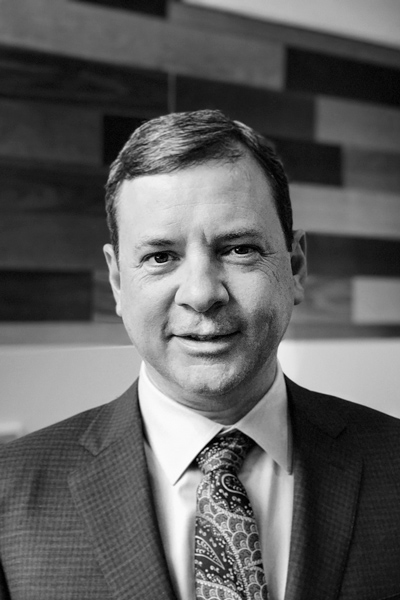At Total Wine & More, Michael Kirschner is working to create a world-class retail experience—one that includes brick-and-mortar stores and a digital presence. He speaks with pride about the retailer’s consumer value: each location packs in about 8,000 different varieties of wine, 2,500 beers, and 3,000 spirits, taken from every producing region of the world, and at every price point. Many are from smaller breweries and wineries, which means they’re difficult or impossible to find at other retailers. When he took on the role, Kirschner knew that replicating that experience online would be a difficult but essential next step for Total Wine to continue to reach new heights. Beyond accelerating both halves of that equation, they’d need to find a way to bridge the two and offer customers a truly cohesive experience.
In-Store Wine Expertise Goes Online
In stores, knowledgeable sales associates direct customers, advising on the best wine to pair with a meal or give as a gift. The stores also have classrooms in which customers learn how to taste and swirl wine, as well as educate themselves about everything from Spanish and Portuguese wines to single-malt scotch. Total Wine’s digital presence, meanwhile, supports and replicates the features of the physical stores. Just as a salesperson will know the right wine to delight a repeat customer, the Total Wine website builds a flavor profile of each customer, allowing for personalized recommendations and promotions. If a customer has participated in a wine tasting in the brick-and-mortar store, they can log their likes and dislikes, enabling them to find their favorite wines more quickly.

On and off-line, Total Wine supports the curiosity of its customers. “Our best customers really have this passion to learn more about wine. They want to try new things, to be that person who brings a cool new bottle to a dinner, and to try to find something that’s different or better,” Kirschner explains. “They like hearing the stories behind the wineries, why they’re important, and the passion that goes into making wines.” Total Wine uses what they already know about a customer’s preferences to steer them to something similar, but further off the beaten track—usually something from a high-quality small- or mid-sized winery.
High-End Tech Talent
Working with customers like these and replicating a dynamic retail space presents exciting challenges and opportunities for tech talent. “It’s not just a matter of throwing up a website that works,” Kirschner says. “We need people who think a little differently, people who consider how to create and craft experiences end to end.” With that, Total Wine is ramping up its website and optimizing it for mobile, where a growing number of customers now access it. They’re also building an app and implementing strategies that make buying wine more convenient, like allowing customers to pick up bottles they’ve purchased online in the store.
To achieve the ultimate in customer experience, Kirschner works closely with teams such as SapientRazorfish. “We are excited to partner with Total Wine to enable their digital transformation journey,” says Kamalesh Loganathan, senior client partner at
SapientRazorfish. “With customer centricity at our core, we are committed to enable an experience that emulates Michael’s vision for Total Wine’s digital presence and places the customer at the forefront.”
Kirschner’s teams use agile methodology to get those important tasks done. He calls it a highly collaborative, fast-paced, and cross-functional methodology, in which teams work together to identify areas of customer need and design software around them. They vote on which projects to take on, ensuring a sense of investment in the task at hand. Everyone involved in the project works together face-to-face—software engineers, business analysts, and more. It’s a more flexible and responsive style of working than is usually found within traditional IT departments. “By having all the people necessary to solve a problem in one spot, you get it done faster,” Kirschner says.
Team Accountability & Support
Teams check in with each other every day at stand-up meetings, where they describe their progress on current projects and where they feel stuck. That way, they can find support immediately from their colleagues. Every two weeks, the digital teams meet to present working versions of their software. It’s an occasion for Total Wine teams to come together to celebrate wins and learn about what others have been accomplishing. In an agile methodology, team members decide on their own projects and approaches and help one another solve problems. There’s no micromanagement in that process.
Team members describe Kirschner as inspiring, encouraging, empowering, and caring. Because of that, morale is very high. Total Wine has invested in giving the teams the resources they need to make the agile methodology most effective by bringing in consultants to train employees in this style of work, and creating new open office space within the building. “The team really has a sense of ownership, collaboration, responsibility, and accountability,” Kirschner says.
A hacker at heart, Kirschner never stops learning and is similarly dedicated to nurturing his employees’ growth. “I really care about the people, their careers, their happiness,” he says. To that end, Kirschner puts structures in place to make sure his employees are continuously learning and growing. Each receives training from top-tier consultants in skills and methodologies as diverse as test-driven development, technology architecture, and MOB programming, which emphasizes collaborative problem solving. The level of skill they achieve is evident in Kirschner’s descriptions of their work—they sound like expert craftsmen. “They pay attention to detail and good design matters to them,” he says. “There’s a piece of excellence in what they do, as well as pride and ownership.”
